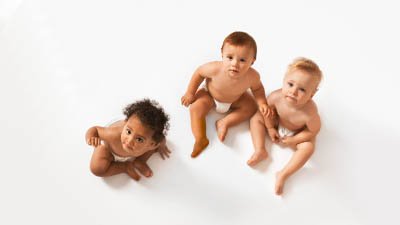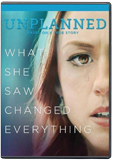
What About Fetal Disability and Death?
How should pro-life people think about disabled and dying babies?
I'm pro-Becky who found out at her 20-week anatomy scan that the infant she had been so excited to bring into this world had developed without life-sustaining organs.
I was recently discussing the Dobbs decision with a friend who claimed she was pro-life but then suddenly flipped when she began to see the hyperbolic rhetoric by the pro-abortion camp. She sent me an emotional video featuring the testimony of a woman who had been pregnant with a baby whose organs were not developing properly. The lady chose to have her baby aborted (sadly, killed, in reality) rather than allowing her baby’s life to continue. It was a truly heart-breaking testimony and yet another reminder that we live in a world groaning under the weight of the curse.
“Stacia,” my friend wrote. “Put yourself in this lady’s shoes—what if this were Kieran’s child? How would you feel? What would you do?” Kieran is our oldest son who will be celebrating 14 years post-womb in a few months. I found her comments somewhat ironic because Kieran has a genetic condition that would have placed him on the in utero kill list (similar to Down syndrome). Of course, she wasn’t suggesting that we should have had Kieran killed but was trying to make the sad situation above personal to me. But at what point do we stop trying to play God in determining which babies are killed and which are allowed to live?
As has been pointed out before, every human being bears the image of God, no matter how extensive a person’s disabilities are. And we have no right to take the life of an innocent image-bearer. The power of life and death belong to the Creator of life.
I appreciated these comments from another mom whose preborn baby had a fatal condition.
Mary’s life lasted a total of 37 weeks 3 days and 6 hours. In effect, like a small percentage of children conceived in our country every year, Mary was born dying. What can partial birth abortion possibly do for children like Mary? This procedure is intended to hasten a dying baby’s death. We do not need to help a dying child die. Not one moment of grief is circumvented by this procedure [my emphasis].1
Our Value as Image-Bearers
In our urgency to defend the rights of the unborn with disabilities, we need to be careful that our defense is based on the fact that each person, from the moment of fertilization, is made in the image of God and that we aren’t to take the life of an innocent image-bearer. Period.
In our urgency to defend the rights of the unborn with disabilities, we need to be careful that our defense is based on the fact that each person, from the moment of fertilization, is made in the image of God and that we aren’t to take the life of an innocent image-bearer. Period. Many times we rush to show the contributions of those who circumvented abortion as a way to say, “See what you would have missed if this person had been killed in utero? See how much value this person adds to the world?”
For example, there’s a popular pro-life article from a pro-life site on Andrea Bocelli that makes the rounds. Gifted with a beautiful voice, Bocelli was almost lost to abortion. When Andrea Bocelli’s mother was pregnant with him, she had an attack of appendicitis. After the treatments, the doctors encouraged her to kill him because they believed he would be born with disabilities. She refused and Andrea was born blind. But, in spite of that, he has blessed many with his talents in music. The article ends with this, “Listen to them sing together, a song called ‘The Prayer.’ And think about what the world would have lost had these two people [Bocelli and Celine Dion] been lost to abortion. Imagine what the world HAS lost because of over 50 million abortions in the US alone.”2
While I agree that each child is a blessing (Psalm 127:3), we need to be careful that we aren’t basing the value of a child’s life on what he or she does or can offer to the world but instead on who he or she is—image-bearers of the Creator. We venture into utilitarian arguments when we try to establish human value based on what someone does or contributes to society. Kieran has been an amazing blessing to us—he is full of joy and has a passion for sharing Jesus. He has been a beautiful testimony to God’s grace to many. But his value as a person—and the reason he should have the right to life—is not based on his contributions to the world. Rather his value comes because he bears the image of God.
To return to the article on Andrea Bocelli, the essential idea is that it’s good the baby wasn’t killed because his work today is so enjoyable for so many people. But what does that mean for the babies born with poor eyesight who don’t end up as international singing sensations? Would it have been OK if they had been killed before having a chance at life outside the womb because some would say they don’t contribute as much to society? And who’s to say what level of contribution makes someone valuable enough to live? Some people may only be “valuable” to a few people, but does that make their life any less worth a chance to live?
If, in the debate over the sacredness of life and as a major reason for allowing children with disabilities to live (both inside and outside the womb), we offer up the idea that they bring so much to the table, that they can contribute much to society, we run the risk of defining the value of life in terms of “work” rather than as it should be defined—in terms of being made in the image of God. And we usurp God’s absolute authority when he says, “Do not kill those who bear my image.” Any of them.
Where Are You, Church?
Of course, it’s one thing to say, “Don’t kill your baby with disabilities,” and it’s another to actually walk together with families living with disability. If we are honest, we will acknowledge that disability can be expensive (the bills from uncovered medical treatments and therapies can quickly pile up). And it can be hard—watching your child struggle with everyday tasks or suffer through surgeries or at the hands of those who don’t grasp their value as image-bearers.
Sadly, many churches (and people in them) are not ready or willing to welcome those with disabilities to their fellowship. Yet, Church, if we are truly pro-life, we need to be pro-all life. We, of all people groups, need to be the first to welcome families living with disability to our buildings, ensuring accessibility is available and accommodations are in place. We need to be the first to assist families living with disability in tangible ways—offering meals, companionship, and emotional and financial support as needed. This can only come when we have a robust theology of disability that enables us to see each person as fearfully and wonderfully made by God and indispensable to our lives (1 Corinthians 12:22) as long as God gives them life.
Not only do our actions need to represent the hands and feet of Christ, but we also need to ensure our words reflect our value and care for those who live with disability.
Not only do our actions need to represent the hands and feet of Christ, but we also need to ensure our words reflect our value and care for those who live with disability. Further, how do we share God’s grace to those who need it daily?
It’s time, Body of Christ, to step up and lead the way in offering hope through Jesus—both for this life and the life to come.
Miscarriage Is NOT Abortion
I’m pro-Vanessa who went to her confirmation appointment after YEARS of trying to conceive only to hear silence where there should be a heartbeat.
I’ve written previously about our loss of a baby through miscarriage. So it has been surprising and, frankly, frustrating to see that pro-abortionists have co-opted miscarriage into furthering their agenda. And it’s been surprising and, frankly, frustrating to watch as marginal pro-lifers are sucked into this conflation. The author of this meme clearly didn’t understand the difference between miscarriage (when a baby “spontaneously” dies in utero) and elective abortion (when a baby is deliberately killed in utero).
Our baby died at some point after eight weeks of life. I had a D&C (dilation and curettage) procedure to remove the baby that had already died. This procedure to treat a miscarriage is not illegal in any state. No one would argue that removing a baby that had already died from the mother’s womb is immoral or should be illegal. Some parents may choose to allow their already dead baby to pass naturally if it is medically safe to wait. Others may choose the D&C. Either way, the active killing of a baby is not involved.
In contrast, with the suction curettage method of abortion (typically done during weeks 6 through 14 of gestation), a living baby is dismembered and sucked out of the mother’s womb. The intent of this procedure is to kill a baby that is alive. This is the same with the D&E (dilation and evacuation) method of abortion (commonly used on babies between 12 and 24 weeks gestation). Again, a living baby is dismembered and sucked out of the mother’s womb. The intent of this procedure is to produce a dead baby. These procedures should be illegal.
With Kieran, I was induced to deliver. The intent was that a living baby would be delivered alive. In contrast, the intent of the induction method of abortion is to produce a dead baby (typically done after 16 weeks of gestation). In some cases, a medication is given to the baby which stops his (or her) heart and the mother is induced. The intent of this induction is to deliver a dead baby or one that will soon succumb and die. Again, this abortion procedure should be illegal—killing babies should not be condoned in our society.
Thankfully, God extends his grace and comfort to the woman who suffers the loss of a baby and offers forgiveness through Christ to the woman who participates in an abortion.
Pretending that a woman who miscarries (and may need a medical procedure to remove the dead baby and the rest of the pregnancy tissue) is on the same moral ground as a woman who has an elective abortion is dishonest. And discerning Christians will see through the sleight-of-hand trickery offered up by pro-abortionists in their attempt to make abortion palatable. Thankfully, God extends his grace and comfort to the woman who suffers the loss of a baby and offers forgiveness through Christ to the woman who participates in an abortion.
No Excuses
We live in a fallen world in which God chooses to allow some to live with what many would call good health while some live with disability. But all exist for his glory. As Christians, we have a responsibility to welcome people of all abilities into our homes and our churches and to offer tangible help that extends beyond the womb as the hands and feet of Christ. But we do not have a right to pick and choose which of those image-bearers lives and which die. We can (and should) be both pro-Becky and pro-her baby, both of whom bear the image of God. And we can (and should) come alongside Vanessa as she mourns the loss of her baby. Neither of these examples, however, provides justification for why elective abortion should be legal.
Footnotes
- https://www.feministsforlife.org/disability-what-if-the-fetus-is-or-could-be-disabled/
- Sasra Terzo, “Andrea Bocelli and Celine Dion: Two Amazing Singers Who Were Almost Victims of Abortion,” May 26, 2014, http://www.lifenews.com/2014/05/26/andrea-bocelli-and-celine-dion-two-amazing-singers-who-were-almost-victims-of-abortion/.
Recommended Resources

Answers in Genesis is an apologetics ministry, dedicated to helping Christians defend their faith and proclaim the good news of Jesus Christ.
- Customer Service 800.778.3390
- © 2024 Answers in Genesis





